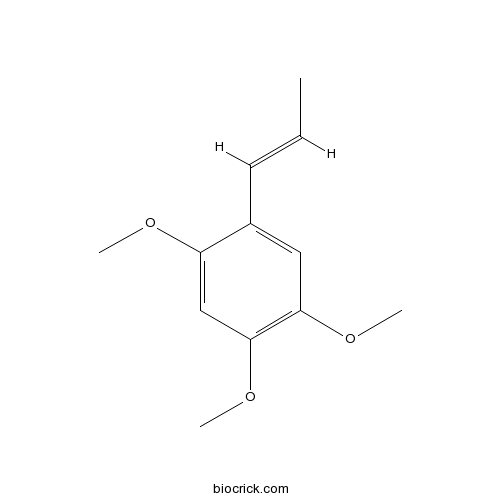Rumex patientia
Rumex patientia
1. The products in our compound library are selected from thousands of unique natural products; 2. It has the characteristics of diverse structure, diverse sources and wide coverage of activities; 3. Provide information on the activity of products from major journals, patents and research reports around the world, providing theoretical direction and research basis for further research and screening; 4. Free combination according to the type, source, target and disease of natural product; 5. The compound powder is placed in a covered tube and then discharged into a 10 x 10 cryostat; 6. Transport in ice pack or dry ice pack. Please store it at -20 °C as soon as possible after receiving the product, and use it as soon as possible after opening.
Natural products/compounds from Rumex patientia
- Cat.No. Product Name CAS Number COA
-
BCN6175
Chrysophanol 8-O-glucoside13241-28-6
Instructions

-
BCN8170
Physcion 1-glucoside23451-01-6
Instructions

-
BCN3837
alpha-Asarone2883-98-9
Instructions

Correction: De novo assembly and analysis of the transcriptome of Rumex patientia L. during cold stress.[Pubmed: 29261799]
[This corrects the article DOI: 10.1371/journal.pone.0186470.].
De novo assembly and analysis of the transcriptome of Rumex patientia L. during cold stress.[Pubmed: 29023590]
Rumex patientia L. is consumed as a green vegetable in several parts of the world, and can withstand extremely low temperatures (-35°C). However, little or no available genomic data for this species has been reported to date. Here, we used Illumina Hiseq technology for transcriptome assembly in R. patientia under normal and cold conditions to evaluate how it responds to cold stress.
Toxicity of anthraquinones: differential effects of rumex seed extracts on rat organ weights and biochemical and haematological parameters.[Pubmed: 25753342]
The genus Rumex and related species such as Rheum and Polygonum are widely used as medicinal herbs and foods. They contain anthraquinones (AQ) such as emodin and chrysophanol as active ingredients, and there is concern about the toxicity of these compounds. This study evaluated the chronic effects of Rumex patientia seed aqueous and ethanolic extracts, in male and female rats separately, on organ weights and over 30 haematological, biochemical and histological parameters, immediately after 14-week administration and after a further period of 15 days without drug treatment. Adverse changes were associated with long-term AQ administration, and these focussed on the liver, lung and kidney, but after 15-day convalescence, most had reverted to normal. In general, male rats appeared to be more susceptible than female rats at similar doses. The water extract produced no irreversible changes, which may reflect the lower dose of the AQ constituents or the presence of different ancillary compounds, and supports the traditional method of extracting Rumex seeds with water. In conclusion, ethanolic extracts of R. patientia caused irreversible pathological changes at very high doses (4000mg/kg), but lower doses and aqueous extracts produced either non-significant or reversible changes. Long-term administration of high doses of AQ extracts over a long period of time should be avoided until further assurances can be given, and given other existing reports of reproductive toxicity, should be avoided altogether during pregnancy.
Systemic signalling in photosynthetic induction of Rumex K-1 (Rumex patientia × Rumex tianschaious) leaves.[Pubmed: 25124181]
The rapid induction of photosynthesis is critical for plants under light-fleck environment. Most previous studies about photosynthetic induction focused upon single leaf, but they did not consider the systemic integrity of plant. Here, we verified whether systemic signalling is involved in photosynthetic induction. Rumex K-1 (Rumex patientia × Rumex tianschaious) plants were grown under light-fleck condition. After whole night dark adaptation, different numbers of leaves (system leaf or SL) were pre-illuminated with light, and then the photosynthetic induction of other leaves (target leaf or TL) was investigated. This study showed that the pre-illumination of SL promoted photosynthetic induction in TL. This promotion was independent of the number of SL, the light intensity on SL and the distance between SL and TL, indicating that this systemic signalling is non-dose-dependent. More interestingly, the photosynthetic induction was promoted by only the pre-illumination of morphological upper leaf rather than the pre-illumination of morphological lower leaf, indicating that the transfer of this signal is directional. The results showed that the transfer of this systemic signalling depends upon the phloem. This systemic signalling helps plants to use light energy more efficiently under light flecks.
[Chemical constituents from aerial part of Rumex patientia].[Pubmed: 23750410]
To study the chemical constituents from aerial part of Rumex patientia.
Anthraquinone derivatives from Rumex plants and endophytic Aspergillus fumigatus and their effects on diabetic nephropathy.[Pubmed: 23683594]
Two new oxanthrone C-glycosides, patientosides A (14) and B (15), together with three known ones (11-13), were isolated from Rumex patientia. Their structures were identified on the basis of spectroscopic methods. The absolute configuration for 14 and 15 were deduced by analysis of their CD spectra and comparison with those of known similar compounds. Compounds 11-15, and 14 known anthraquinones (1-4, 6-10, 16-20) previously isolated from Rumex nepalensis, Rumex hastatus, and endophytic Aspergillus fumigatus, respectively, as well as a commercially available compound rhein (5) were evaluated for their inhibitory effects on IL-6 and extracellular matrix production in mesangial cells.


